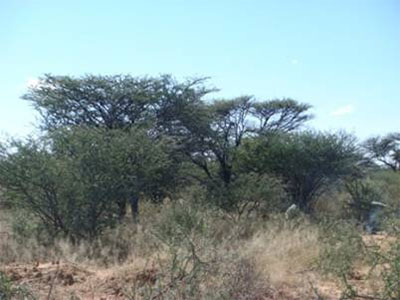Project Profile #4
Cost-benefit analysis of encroachment bush removal in Namibia (2008-2009)
To download this project profile in PDF format click here.
Encroachment bush (Namibia)
Project Objective
C.A.R.E. Ltd. has been working with Dagmar Honsbein (an official from the Ministry of Finance, Namibia and a policy expert) and the Polytechnic of Windhoek, Namibia on a study on the cost-benefit analysis of removing encroachment bush from farmland in Namibia. The work was funded by the Namibian Agronomic Board. The overall objective of the work was to identify a variety of appropriate bush encroachment management practices, both current ones and promising new practices, based on a cost-benefit analysis assessment incorporating economic, ecological and social criteria.
Project Background
Bush encroachment has increased drastically over the last 30 years. The Bush Encroachment Research, Monitoring and Management Project, in 2004, estimated that some 10 million hectares of commercial farmland were infested with encroachment bush in 1970, whilst this figure had increased to 16 million hectares by 2004 in commercial areas. Bush infestation mainly occurs in the higher rainfall areas of the country, where cattle and beef production is dominant.
Project Summary
C.A.R.E. Ltd. carried out the cost-benefit analysis for a wide range of options, specifically including, the cost benefit analysis (CBA) and cash flow for:
- the livestock (incl. game) farming enterprise as it benefits from increased grazing available over time, and
- the financial inter-relationship between each option and the above livestock farming enterprise, i.e. consolidated CBAs and cash flows
- calculation of the net present value (NPV) for a wide range of clearance (manual clearance, aerial and manual arboricides, mechanical clearance, stem burning) and cattle stocking scenarios.
From this, the subsequent value added options for the cleared invader bush were evaluated:
- Bush for domestic wood fuel
- Bush for non fuel uses – fencing, etc.
- Charcoal production (small bush kilns)
- Commercial slow pyrolysis for charcoal only
- Small-scale downdraft gasification (0.25-1 MWe)
- Fast pyrolysis for liquids for subsequent power generation in a dual fuelled diesel engine(s) (0.25-13 MWe)
- Bush combustion in a fluidised bed for power generation (1-70 MWe)
- Co-firing coal/bush for power generation (3.5-93 MWe)
From the calculation of the NPVs under a range of circumstances, the following results were obtained:
- All bush clearance scenarios for the three predominant (heavily infested areas where over 50% of commercial farming is carried out) cattle farming areas in Namibia without income from encroachment bush sales showed negative NPV values, indicating that bush clearance is not economically feasible.
- The breakeven selling price of bush varies between N$7.5 to 35 /t (some €1-4 /t) for the different areas and treatments. Bush sales at farm gate at N$124/t (€10/t) or higher lead to clearly profitable encroachment bush clearing projects. However, if the full value chain is to be considered care needs to be exercised at setting wood sales at an arbitrary price, i.e. higher than N$372/t (or €30/t).
- If bush sales cannot be secured above the breakeven selling price as indicated, then no clearance scenarios prove to be superior with positive NPV.
- If transport costs are included in the bush price, the transport distance that leads to zero NPV varies between 45 to 58km, 107 to 120 km and 169 to 182 km for bush prices of N$124, 248 and 372 /t (€10, 20 and 30/t) respectively.
- Based on the use of the cleared bush for the value added options above, there is a ready, but unquantified market for firewood, however this is seasonal and variable in both price and demand.
- None of the thermal conversion options considered for power generation would be economically viable in Namibia with the current industrial electricity prices.
- Using bush for value options such as commercial charcoal production is possible, however this ultimately is dependent on the charcoal sale price; with consumer demand for more environmentally friendly products, price increases for such products will generally be accepted, however environmental considerations must also be evaluated with regards to the choice of the technology used.
- Using bush, which is sized and dried appropriately, for small-scale decentralised power generation is the closest (in terms of electricity production cost) to being economically viable. Sale of heat from the unit would make it commercially viable and options such as using the heat to drive a refrigeration cycle in summer and heating in winter, should be considered subject to the exact location.
- The electricity selling prices are N$1.33-1.63/kWh for the ~1 MWe gasification system, which are significantly higher than the present tariffs, but these costs may be fully acceptable in remote locations.
- Each farm needs to have its own detailed cost-benefit analysis taking into account all local factors in the determination of the overall viability of a range of options.
Project Status
The work started in late 2008 was completed in June 2009. The results of the CBA will be used by the Namibian Agronomic Board to direct future policy in the utilisation of bush and the optimal ways of supporting clearance activities for increased livestock production. The work is to be published in late 2010/early 2011.
